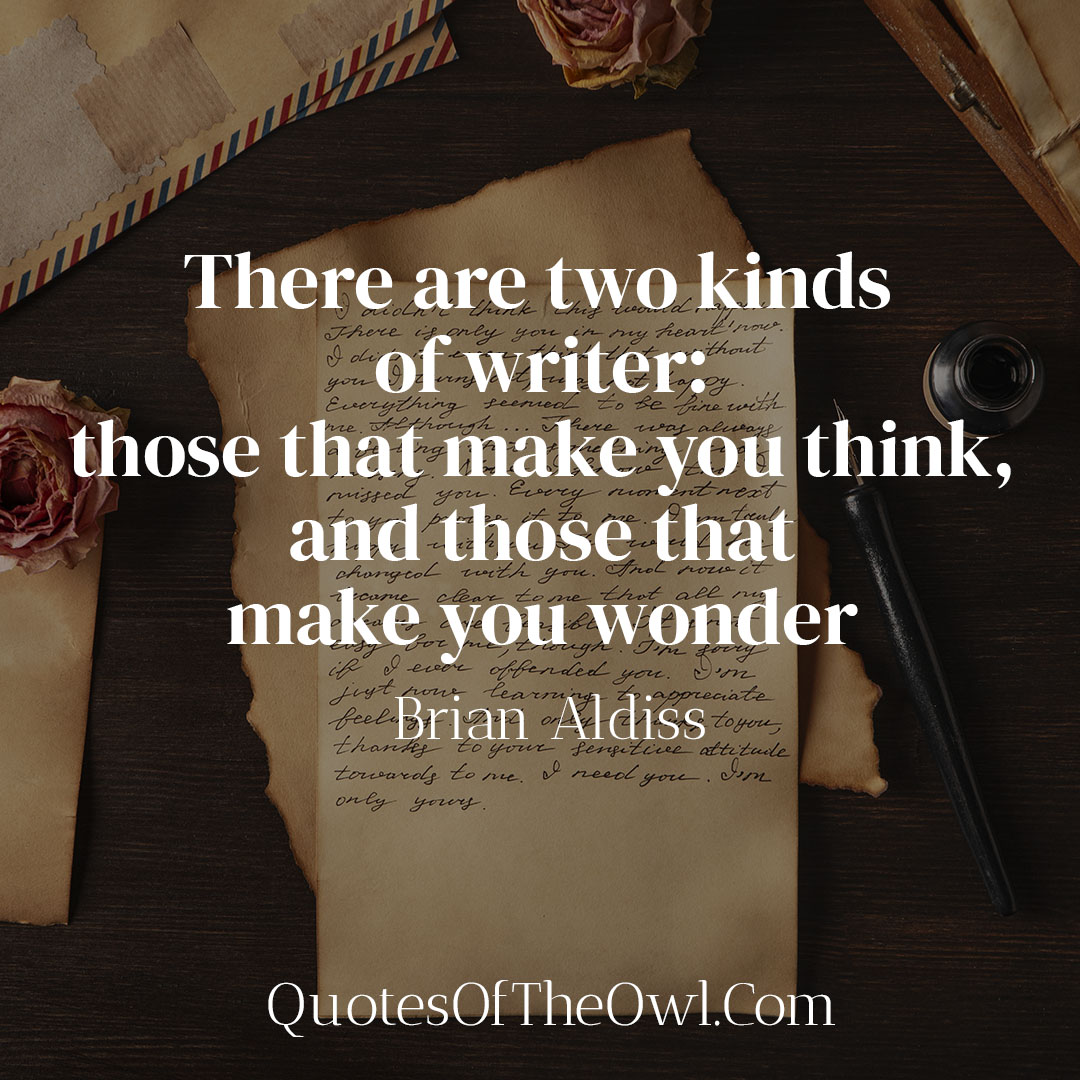There are two kinds of writer: those that make you think, and those that make you wonder – Brian Aldiss
Brian Aldiss’ quote, “There are two kinds of writer: those that make you think, and those that make you wonder,” encapsulates the diverse impact literature can have on its readers. This quote underscores the distinct yet equally valuable contributions of different types of writers to the literary landscape. In this article, we’ll delve into the meaning behind Aldiss’ words and explore the significance of writers who provoke thought as well as those who inspire wonder.
Understanding the Two Types of Writers
Writers who make you think engage readers through intellectually stimulating content. These writers often tackle complex themes and offer profound insights into various aspects of life. Thinkers like George Orwell, with his dystopian masterpiece “1984,” or Albert Camus, with his existential novel “The Stranger,” challenge readers to ponder philosophical questions and societal norms.
Conversely, writers who make you wonder captivate audiences through their ability to ignite imagination and evoke emotions. These writers excel in creating fantastical worlds, magical realism, or surrealistic narratives that transport readers to realms beyond reality. J.K. Rowling, with her “Harry Potter” series, mesmerizes readers with a blend of magic and adventure, while Gabriel García Márquez enchants with his enchanting storytelling in “One Hundred Years of Solitude.”
Impact of Writers Who Make You Think
Writers who make you think play a crucial role in shaping critical thinking skills and expanding perspectives. Their works challenge readers to question assumptions, analyze situations critically, and contemplate the complexities of human existence. For instance, Aldous Huxley’s “Brave New World” prompts readers to reflect on the dangers of a technologically advanced society devoid of individuality and emotion.
Moreover, such writers foster deeper understanding and empathy by shedding light on diverse experiences and perspectives. Toni Morrison’s “Beloved” confronts readers with the harsh realities of slavery and its enduring impact on individuals and communities, prompting introspection and empathy.
Significance of Writers Who Make You Wonder
Writers who make you wonder fuel creativity and curiosity, offering readers an escape from the mundane into the realm of the extraordinary. Their imaginative storytelling sparks awe, inspiration, and a sense of wonder that transcends boundaries. For example, Lewis Carroll’s “Alice’s Adventures in Wonderland” invites readers on a whimsical journey through a fantastical world filled with eccentric characters and nonsensical situations.
By tapping into the power of wonder, these writers awaken a sense of childlike curiosity and wonderment in readers, reminding them of the limitless possibilities inherent in the human imagination.
Finding Balance in Writing
While writers may lean towards one end of the spectrum—provoking thought or inspiring wonder—it’s essential to recognize the value of incorporating elements of both in their work. A balanced approach allows writers to engage readers on multiple levels, fostering intellectual stimulation while also igniting the imagination.
Striking this balance is particularly crucial in creating well-rounded narratives that resonate with diverse audiences and leave a lasting impact. Writers can achieve this by weaving together thought-provoking themes with captivating storytelling techniques, creating a seamless blend of intellect and imagination.
Conclusion
In conclusion, Brian Aldiss’ quote encapsulates the dual nature of literature, highlighting the complementary roles of writers who make you think and those who make you wonder. Both types of writers contribute uniquely to the literary landscape, enriching readers’ lives and expanding the boundaries of imagination and understanding. By embracing the diversity of voices and perspectives in literature, we can cultivate a richer appreciation for the profound impact of storytelling on our lives.

